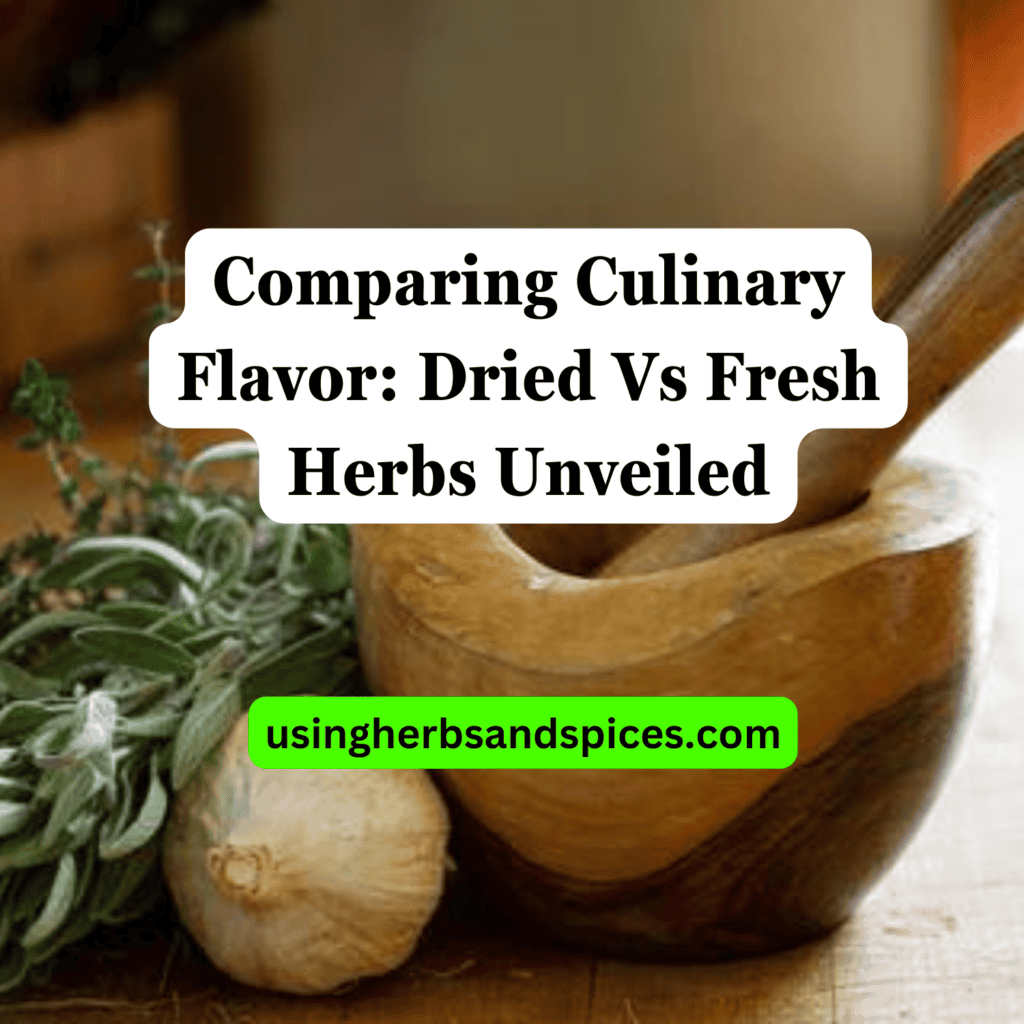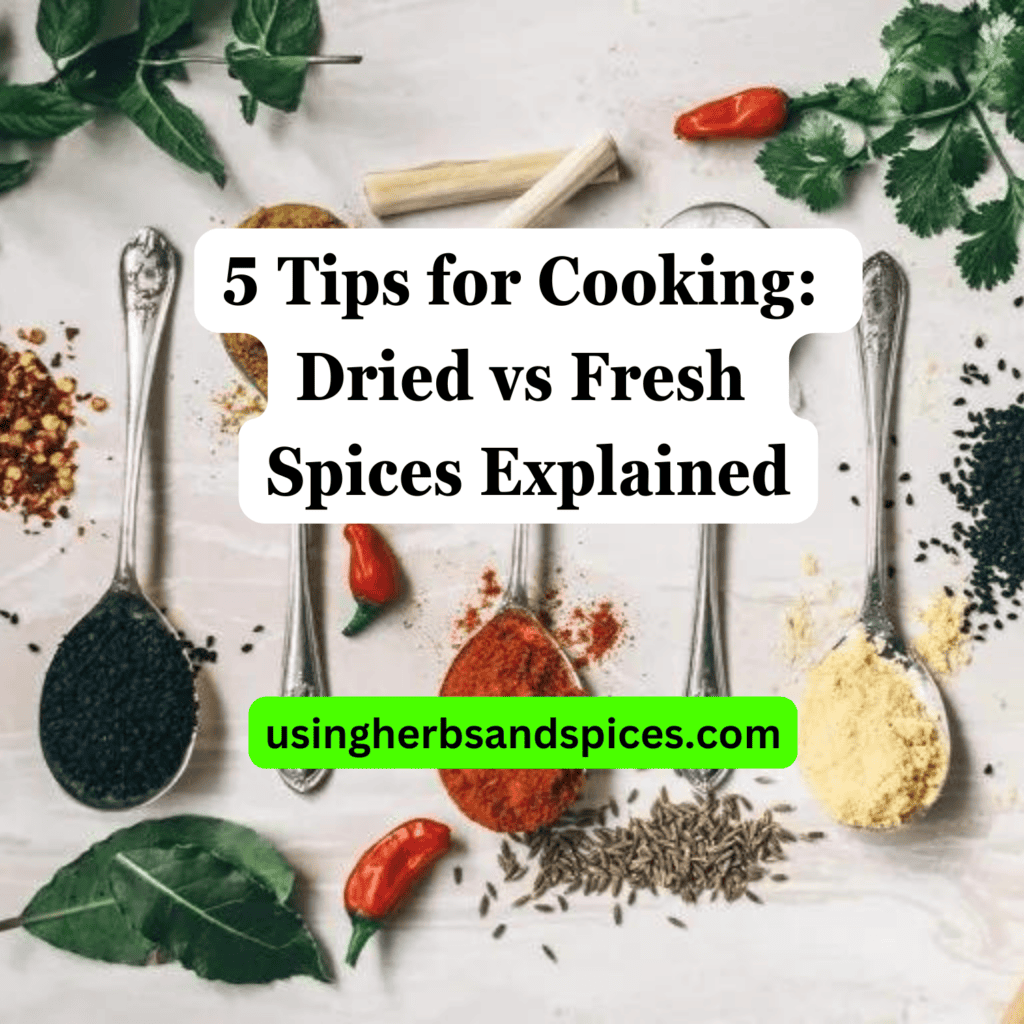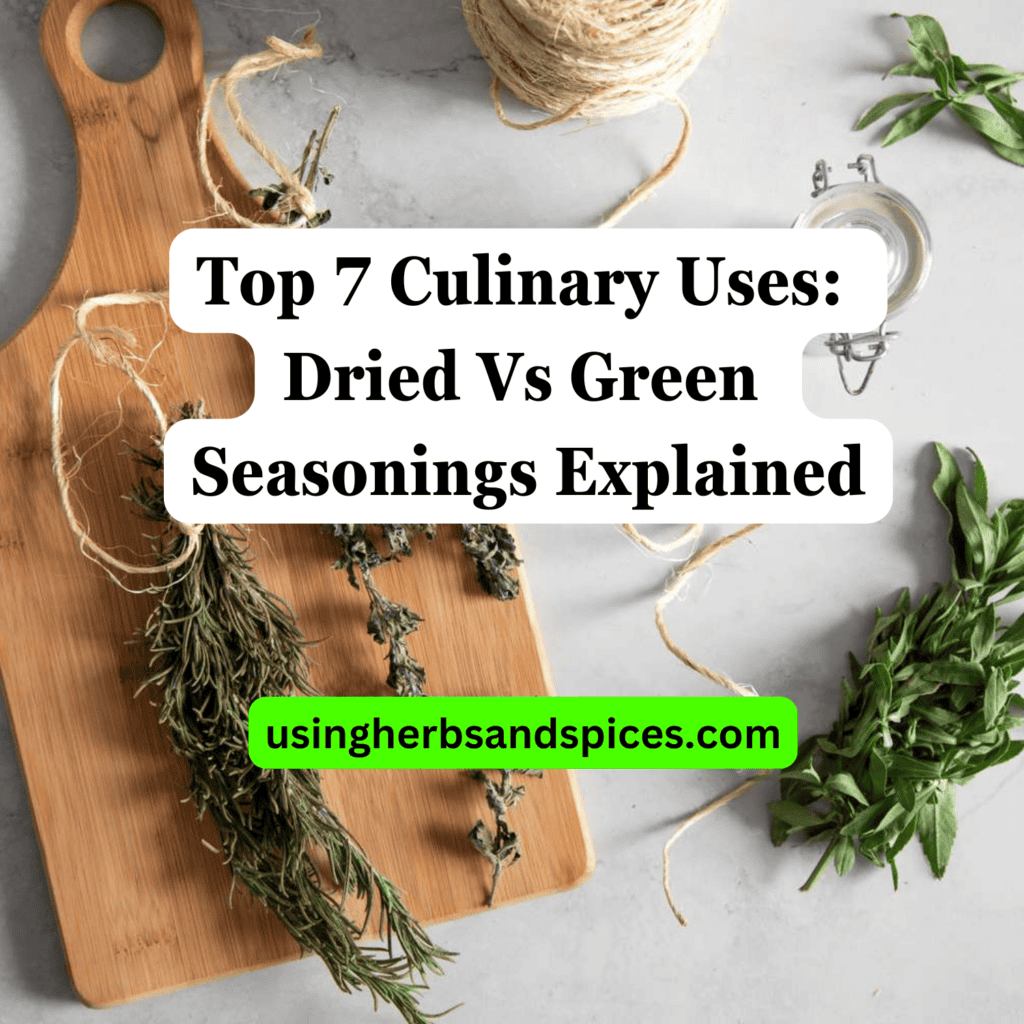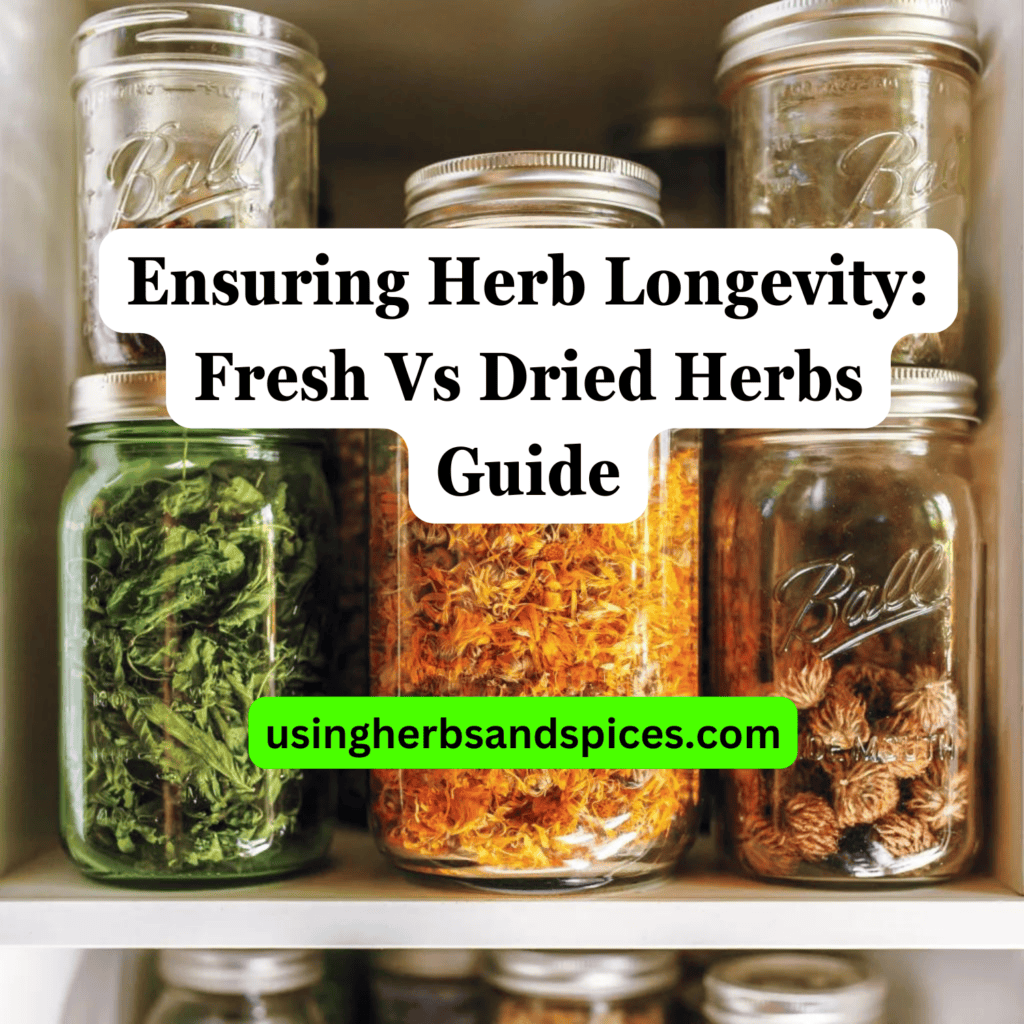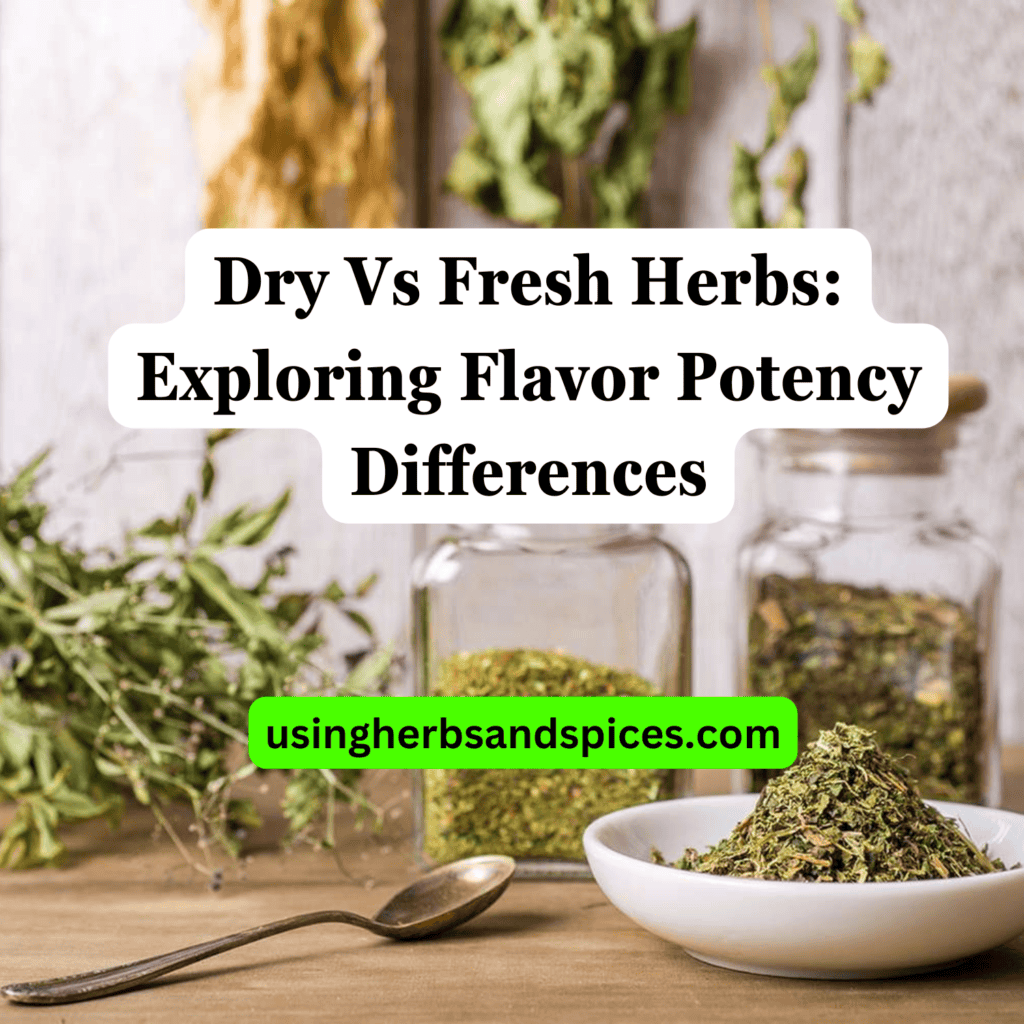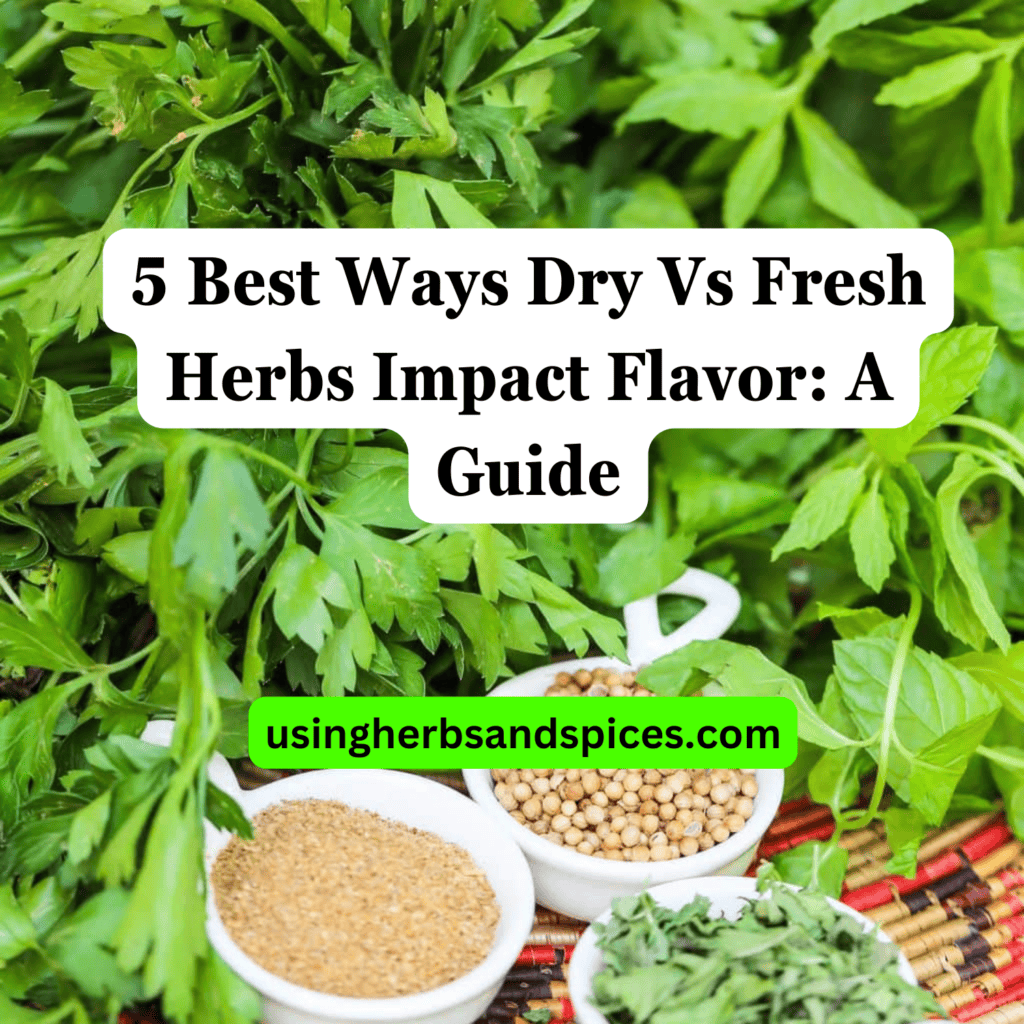SUMMARY: Dry herbs pack a more concentrated flavor than fresh herbs, meaning you’ll need less when cooking. Fresh herbs offer a brighter taste but may require larger amounts to achieve the same flavor impact as their dry counterparts.
Ever puzzled over whether to use dry or fresh herbs in your cooking?

This article dives deep into the nuances that differentiate the two, shedding light on a topic crucial for every culinary enthusiast.
- The Essence of Herbs: Dry vs Fresh
- Unlocking the Flavor Intensity
- When to Use Dry or Fresh Herbs
- Preserving the Flavor of Herbs
Continue reading to navigate the flavorful world of herbs more confidently and make choices that elevate your cooking.
The Essence of Herbs: Dry vs Fresh
The journey from fresh-picked herbs to their dried counterparts is more than a mere process of dehydration. It’s a transformation—of texture, aroma, and, most critically, flavor. Fresh herbs, vibrant and aromatic, are celebrated for their bright, sharp flavors. They introduce a burst of freshness that is often central to the identity of dishes like pesto, salads, and salsas.
In contrast, drying herbs concentrates their flavors, sometimes altering them to exhibit deeper, more savory notes. This process not only extends their shelf life but also changes their culinary role. Dried herbs excel in long-cooked dishes, where they infuse the dish with a complex bouquet of flavors that fresh herbs cannot withstand or deliver over lengthy cooking times.
The essence of herbs, whether dry or fresh, plays a pivotal role in the culinary arts, influencing not just the taste but the very character of a dish. Understanding this essence is key to mastering the use of herbs in cooking, allowing one to orchestrate a symphony of flavors with just a pinch or a handful of these natural wonders.
Unlocking the Flavor Intensity
The drying process significantly transforms the flavor profile of herbs, offering a more concentrated and often sharper taste compared to their fresh counterparts. This change in flavor intensity is primarily due to the evaporation of water content, which leaves behind the essential oils and aromatics responsible for the herb’s distinct characteristics. As these oils are more densely packed in dried herbs, a smaller quantity is required to achieve the same taste effect as fresh herbs.
Moreover, the flavor of herbs can evolve during the drying process, leading to a different spectrum of taste. For instance, dried oregano, thyme, and rosemary often exhibit a more muted but deeper earthiness and complexity than when they are fresh. This transformation is not only a result of concentration but also the result of chemical changes that occur during drying. These changes can create flavors that are unique to dried herbs, lending a specific depth that is sought after in various cuisines.
However, it’s important to note that not all herbs maintain their desirable qualities when dried. Some herbs, like cilantro and parsley, lose a significant part of their fresh, vibrant essence, becoming somewhat dull and less impactful in dishes. Therefore, understanding the nature of these changes is crucial for culinary applications, enabling chefs and home cooks alike to make informed decisions on when to use dry or fresh herbs to artfully enhance their dishes.
When to Use Dry or Fresh Herbs
Deciding whether to use dry or fresh herbs in your cooking can profoundly affect the flavor and aroma of the dish. As a general rule, dry herbs are best used in recipes that involve cooking for longer periods, such as stews, soups, and sauces. The prolonged cooking time allows the flavors of dry herbs to infuse throughout the dish, providing a depth and complexity that fresh herbs might not be able to withstand over long periods. On the other hand, fresh herbs are ideal for dishes that are either not cooked or lightly cooked, such as salads, dressings, and garnishes. Their natural, vibrant flavor can be a delicate finishing touch that elevates the entire meal.
Incorporating dry herbs is best done at the beginning of the cooking process to ensure their flavors have enough time to meld with the other ingredients. Conversely, fresh herbs often provide their best flavor when added towards the end of cooking or just before serving. This approach preserves their color, texture, and aroma, ensuring they contribute a bright, fresh taste to the dish. However, there are exceptions to these guidelines. For instance, hardier fresh herbs like rosemary and thyme can withstand longer cooking times, making them versatile in a variety of culinary applications.
Understanding the strengths and limitations of each form of herb is essential. Dry herbs, being more concentrated, require a lesser quantity than their fresh counterparts to achieve the desired flavor intensity. A common conversion is one tablespoon of fresh herbs to one teaspoon of dry herbs, although tasting and adjusting based on personal preference is always recommended. This fundamental knowledge enables both home cooks and professional chefs to make informed decisions when seasoning dishes, ensuring the best possible outcome for their culinary creations.
Preserving the Flavor of Herbs
Proper storage of both dry and fresh herbs is crucial for maintaining their flavor and extending their shelf life. Dry herbs should be stored in a cool, dark place in airtight containers to protect them from moisture and light, which can diminish their potency over time. They typically last for up to a year before beginning to lose their flavor. On the other hand, fresh herbs require a bit more care to preserve their vibrant flavors. Most fresh herbs can be stored in the refrigerator, either wrapped in a damp paper towel and placed in a plastic bag or with their stems immersed in a glass of water. Whichever method you choose, it’s important to check the herbs regularly and change the water or damp paper towel every few days to keep them fresh.
Another effective method for preserving the flavor of fresh herbs is by freezing them. This can be done by chopping the herbs and freezing them in an ice cube tray with water, or by placing them in airtight bags and freezing them flat. Freezing herbs in oil is particularly useful for herbs commonly used in cooking, as the oil can be directly added to the pan when starting a dish.
For those interested in long-term preservation, drying fresh herbs is a viable option. Herbs can be air-dried, oven-dried, or dehydrated depending on the resources available. Once fully dried, they should be stored in airtight containers in a cool, dark place, similar to purchased dry herbs. This method allows for extending the life of seasonal herbs well beyond their fresh state, ensuring you have access to their flavors year-round.
By adopting these practices for storing dry and fresh herbs, you can significantly enhance the taste of your meals and reduce waste, making the most of these aromatic ingredients in your cooking.
Cooking with Precision
Understanding the distinct flavor levels of dry versus fresh herbs is crucial in mastering the art of cooking and seasoning.
- The drying process concentrates the flavors of herbs, making dry herbs more potent than their fresh counterparts.
- Fresh herbs offer a vibrant, delicate flavor suited for finishing dishes or use in raw preparations.
- Choosing between dry and fresh herbs depends on the cooking method, the desired intensity of flavor, and the specific characteristics of the herb.
- Proper storage is essential to preserve the flavor of both dry and fresh herbs, enhancing their longevity and potency in culinary applications.
Understanding the Flavor Levels of Dry Vs Fresh Herbs FAQs
Do dry herbs lose their flavor over time?
Yes, dry herbs do lose their flavor over time. The essential oils responsible for their aroma and taste gradually diminish, especially if not stored properly. It’s recommended to replace dry herbs every 1-3 years, ensuring they are kept in airtight containers, away from light and heat to maximize their shelf life.
How can I substitute fresh herbs for dry ones in a recipe?
To substitute fresh herbs for dry ones in a recipe, a general rule of thumb is to use three times the amount of fresh herbs as dry. This is because dry herbs have a more concentrated flavor due to the loss of moisture. Therefore, if a recipe calls for 1 teaspoon of dry herbs, you should use 3 teaspoons of fresh herbs to achieve a similar flavor profile.
Are there any herbs that are better used dry than fresh?
Yes, there are herbs that are often considered better when used dry than fresh. Oregano, thyme, sage, and rosemary are a few examples where the drying process concentrates their flavors, making them more desirable in dishes that require cooking over long periods. Dry versions of these herbs tend to retain their potency and impart a more robust flavor to cooked dishes compared to their fresh counterparts.


